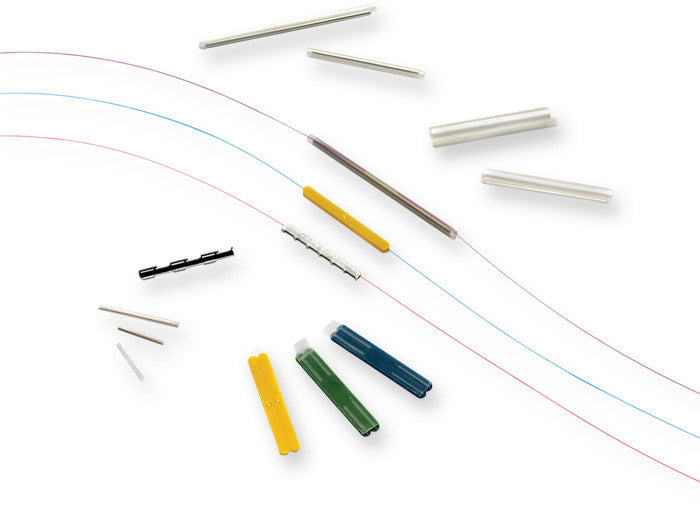Fiber optic sleeves are an essential component of fiber optic cables that play a critical role in ensuring optimal transmission of light signals. These protective devices help to protect fiber strands from damage caused by physical stress, environmental factors, and other external factors that can lead to signal loss.
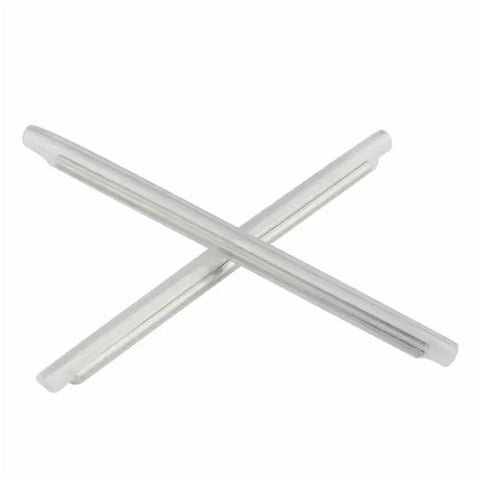
In this blog, we will explore fiber optic sleeves in detail, including their types, benefits, and applications.
What Is a Fiber Optic Sleeve?
When two fibers undergo fusion splicing, the splice sleeves protect the exposed fibers and the splice joints after the splicing process is completed. In general, fiber splice protective sleeves are made of cross-linked polyolefins, shrink tubes from heating, hot and melted tubes, and single stainless steel needles.
The material used is specifically designed for fiber splice protectors, guaranteeing fiber closure protection. The installation of a protective sleeve should be prioritized prior to the actual fusion splice process to prevent the fiber from breaking and having to be restarted.

Features of the Fiber Optic Splice Protection Sleeve
Fiber optic splice protection sleeves, also known as heat shrink sleeves, are designed to protect fiber optic splices and connectors from damage caused by external factors such as moisture, dust, and physical stress. These sleeves are made of heat shrinkable materials that shrink and conform to the fiber splice or connector when exposed to heat, creating a secure and protective seal. Here are some of the features of fiber optic splice protection sleeves:
1.Durability: Fiber optic splice protection sleeves are made of durable materials that are resistant to environmental factors such as moisture and dust. They are designed to provide long-lasting protection to fiber splices and connectors, ensuring reliable signal transmission.
2.Easy Installation: Fiber optic splice protection sleeves are easy to install and use. They are designed to fit snugly over the fiber splice or connector and can be easily shrunk into place using a heat source.
3.High Tensile Strength: Fiber optic splice protection sleeves have high tensile strength, which means that they can withstand physical stress and tension. This feature is essential in ensuring that the fiber splice or connector is protected from damage caused by bending or twisting.
4.Transparency: Fiber optic splice protection sleeves are transparent, which allows for easy inspection of the fiber splice or connector. This feature is essential in ensuring that the splice or connector is properly aligned and protected.
5.Wide Operating Temperature Range: Fiber optic splice protection sleeves can operate in a wide range of temperatures, making them suitable for use in various applications. They can withstand temperatures ranging from -40°C to 100°C, depending on the type of sleeve.
6.Compatibility: Fiber optic splice protection sleeves are compatible with different types of fiber optic cables and connectors. They can be used in various applications, including telecommunications, data centers, and military and aerospace.
7.Cost-effective: Fiber optic splice protection sleeves are cost-effective solutions for protecting fiber splices and connectors. They are less expensive than other protective devices and offer reliable protection to fiber optic cables and connectors.
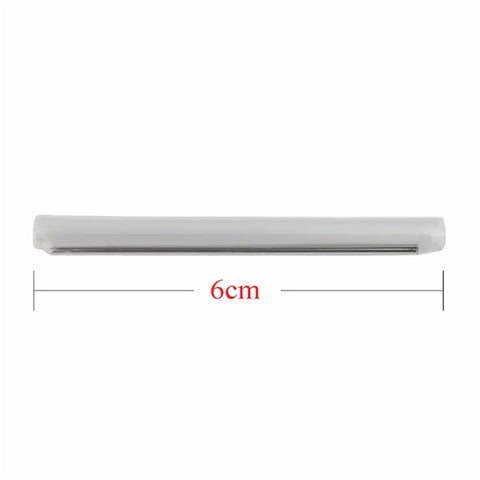
Structure and Construction
A splice protective sleeve consists of three main components: a heat-meltable adhesive inner tube, a reinforced strength member in the middle portion, and a heat-shrinkable single outer tube.
Inner Tube
The inner tube is made of thermo-meltable adhesive and encapsulates the fusion slice joints..It provides vibration damping and a single environmental seal to protect the fiber from possible contamination and damage.
Reinforced Strength Member
The second part is found on the outside of the inner tube and is commonly made of stainless steel, nonmetallic, or ceramic. Its main function is to provide better rigidity and prevent misalignment, fiber breakage, and micro-bending.
Outer Tube
The final component is the outer fiber protection tubing, which is made of heat-shrinkable cross-linked polyolefins. Its primary function is to provide an easy-to-shrink force that drives the adhesive liner to all splice areas and excludes air bubbles.
How Does Fiber Optic Sleeve Work?
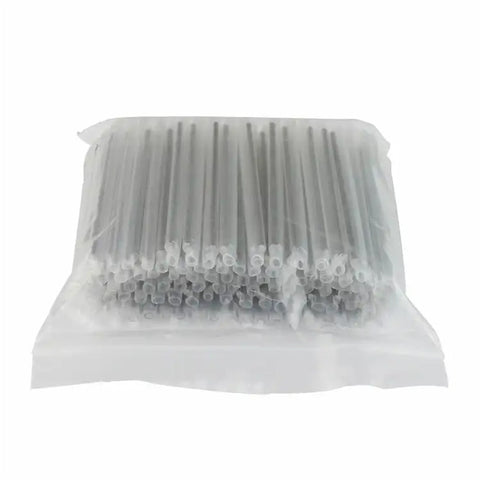
During fusion splicing, the fiber undergoes melting.
The operator will use a fiber-optic heat shrink sleeve to protect against the melting point when the hot-meltable adhesive innermost tube comes into contact with the fused fiber.It also melts to allow the fiber joints to be tightly wrapped for sealing and stuffing functions. Once the outermost tube is heated, its thermally contractible nature allows it to contract, wrapping the fiber joint and the strengthened member completely. A hot-meltable inner tube is then used to hold them together and prevent moisture, while also increasing the strength of the fiber joints.
What are splicing sleeves used for?Applications of Fiber Optic Sleeves
Fiber optic sleeves have numerous applications in various industries, including:
1.Telecommunications: Fiber optic sleeves are commonly used in telecommunications applications, such as in fiber optic networks, to protect the fiber splice point or connector. Fiber optic cables are used extensively in telecommunications networks to transmit data, voice, and video signals over long distances. Fiber optic sleeves are used to protect the fiber splice point or connector from damage caused by physical stress, environmental factors, and other external factors that can lead to signal loss.
2.Data Centers: Data centers use fiber optic cables extensively to transmit data over long distances. Fiber optic sleeves are used in data centers to protect fiber optic cables and connectors from damage caused by physical stress, environmental factors, and other external factors that can lead to signal loss.
3.Military and Aerospace: Fiber optic sleeves are used in military and aerospace applications where ruggedness and durability are critical. These sleeves are designed to withstand harsh environments, including extreme temperatures, moisture, and other environmental factors.
4.Medical: Fiber optic sleeves are used in medical applications, such as endoscopy, to protect fiber optic cables and connectors. These sleeves are designed to withstand the harsh conditions of the human body and provide reliable transmission of light signals.
At what instance protection sleeve should be inserted in fiber?
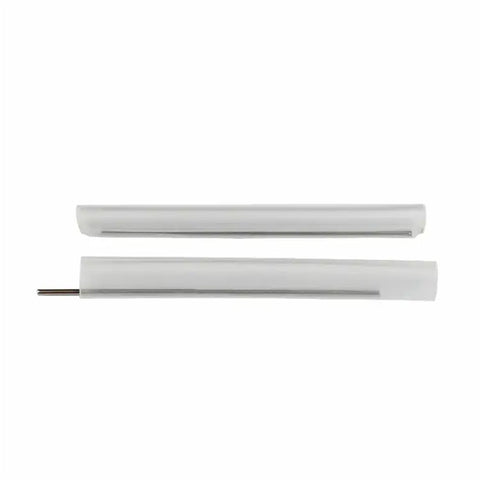
When using fiber-optic splice protective sleeves, you need to be aware of the precautions that will help prevent unnecessary losses and accidents while guaranteeing their long-term use. Keep the following in mind:
- There should be no air bubbles left in the protection tubes, ensuring the long-term reliability and durability of the fiber splices.
- The operator should apply uniform tension to the fiber, allowing it to stay inside the Fusion-Protection Sleeves throughout its use.
- When the fiber cracks increase, the tension applied to it should not be too much.
- Avoid fiber twisting because doing this can cause unnecessary fiber loss and micro bending.
- Always wait for the heat-shrinkable outer tube to finish shrinking, cooling, and shaping to avoid uneven heating, leading to optical fiber bending.
- Prior to fusion splicing, fiber splice protection sleeves should be properly inspected and cleaned. Not inspecting and cleaning them beforehand can lead to easier cable attenuation and breakage.
- Don’t attempt to install the optical fiber before the strength member or place it together with the strength member parallel to the fiber holder’s base. Doing this can exert more stress on the optical fiber, fiber holder, and protection sleeve, increasing the fiber’s insertion loss.
- Ensure that there is no grease or cable gel inside the protection sleeve, which may cause the fibers to bend and break easily. Always make sure that you thoroughly clean the sleeves and avoid touching the fibers when you have already properly cleaned them.
Types of Fiber Optic Sleeve
Splice protection sleeves generally come in two major types: single and ribbon. Below, you’ll find a comparison differentiating these two.
Single Fiber Protection Sleeve

A single fiber protection sleeve is mainly utilized for single-mode fibers. The reinforced strength member of this splice protector adopts stainless steel needles, reducing possible fiber damage. Typical lengths of this type are 40mm and Fusion-Protection Sleeves 60mm. These protection sleeves also vary in sleeve color, but most consumers prefer the transparent tube to allow them to inspect the optical fiber status.
Ribbon Fiber Protection Sleeve
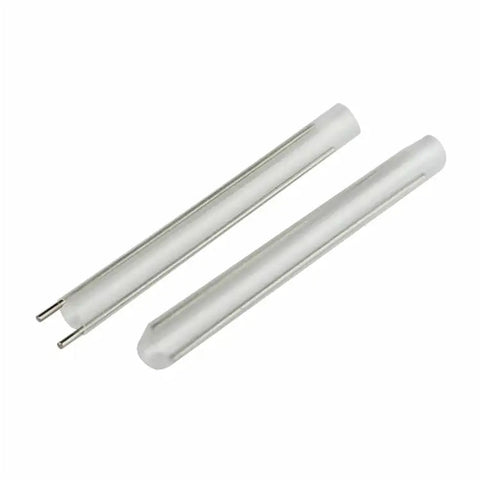
The other type is the ribbon fiber protection sleeve, which mainly protects multiple fiber ribbon splices. Its reinforced strength member is made of ceramic to better support the fiber splices.
Commonly, ribbon fiber protective sleeves are 40 mm in length, with fiber counts typically ranging from 2 to 12 in a single ribbon. ribbon fiber protective sleeves are also available in double ceramic strength member options if you need more protection.
The ceramic strength member ensures that no electrical interference between the strength member and the copper material occurs when the fiber application is done near a conducting type.
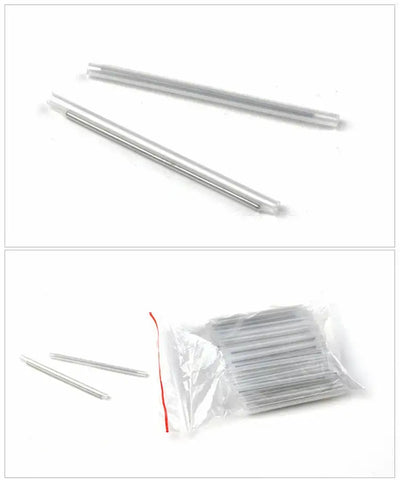
How to install a fiber optic splice protection sleeve?
Before performing the fusion splice, the sleeve needs to be slid onto the fiber. After the splice, the protective sleeve is placed over the splice to cover the exposed joint fibers..It is then placed inside a protective sleeve oven, which is commonly built inside a fusion splitter.
Inside the protective sleeve oven, the optical sleeve is heated until it melts and shrinks around the splice. The steel rod component of the splice protection sleeve protects the fiber from bending..They also allow for environmental protection when the tubing is contracted around the fiber, keeping elements and contaminants away from the splice joints.
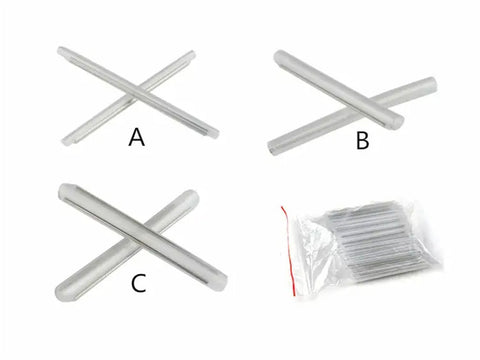
Why do you need fiber splice protectors?
Fiber optic cables, when spliced, become delicate and can easily fracture.With this, they need protection to prevent breakage. The fiber protection sleeve is designed for this exact purpose, acting as a strong coat to protect your spliced fibers from unpredictable cracks during installation or repair time.
What is the different fiber sleeve size?
Fiber optic protection sleeves come in various lengths and diameters.
The outermost can range from 25 mm to 60 mm in length, while the diameter ranges from 1.2 mm to 3 mm.
Mini-series sleeves are also available, and they commonly have sizes 1.5mm and 2mm.
If you need a smaller sleeve, there are also micro-series that are 1.5 mm in diameter or even smaller.
Conclusion:
No matter how small the fusion protection sleeves are, they are an essential component for the fiber optic industry, especially for fusion splicing. A fiber optic sleeve coupled with a cross-connector cabinet ensures maximum protection for your spliced and exposed fiber cables, preventing early fracture and damage. Proper protective sleeve installation should also be done to ensure its ideal performance and accessibility, especially when placed in splice traces and holders.

